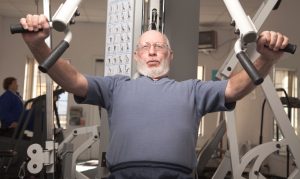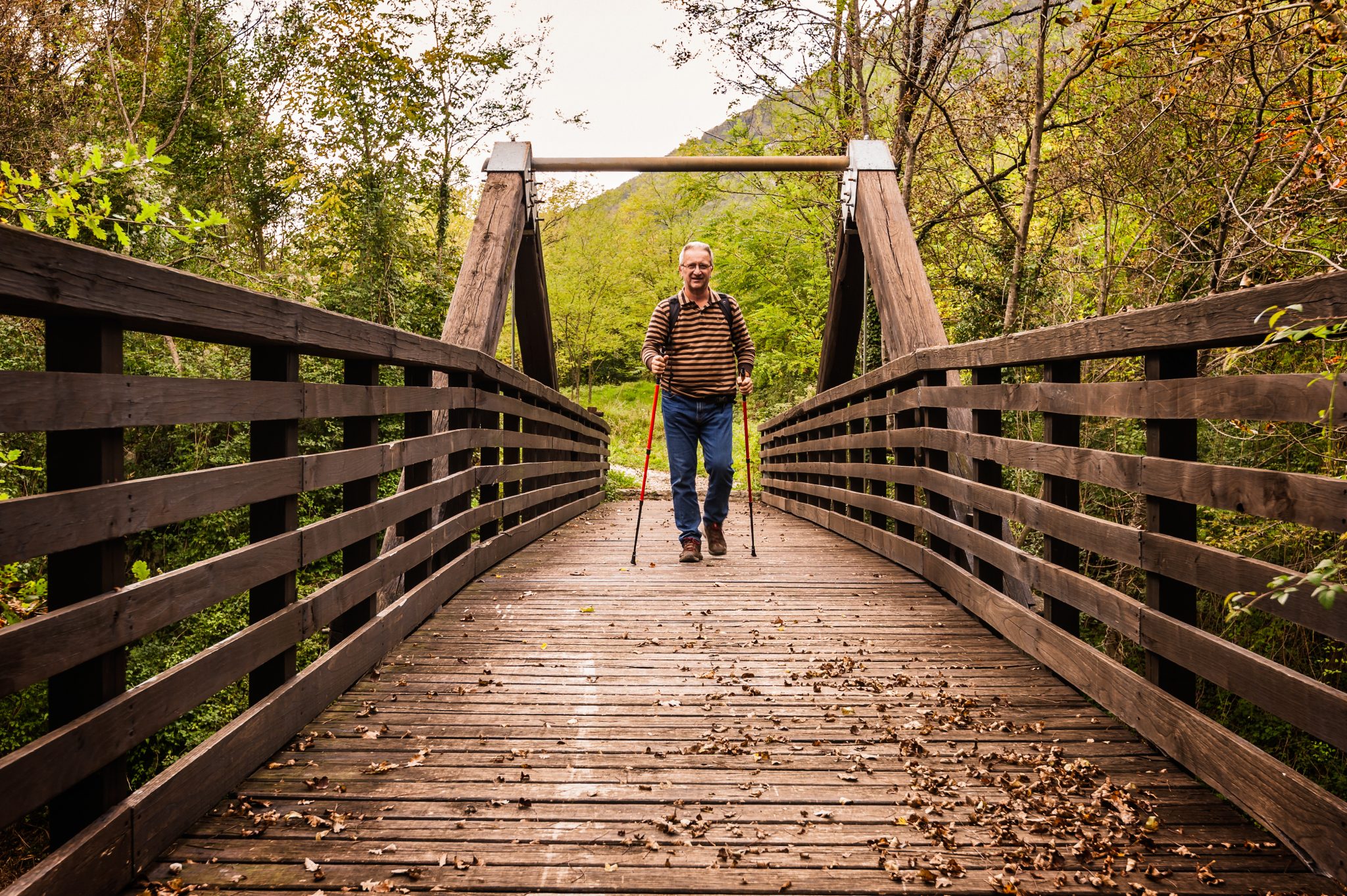There’s plenty to look forward to and enjoy in your golden years. From retiring, to traveling the world, to meeting your grandkids, and so much more, this period of life is packed with joy. However, there are also several challenges that can make it difficult to fully enjoy later life; one of these is the loss of mobility.
Whether it be from an injury, health condition, or simply due to the natural effects of aging, losing your mobility is something that everybody experiences. These changes can make it harder to participate in activities like playing with grandkids, keeping your balance on icy sidewalks, and getting up out of a chair or bed. If your mobility issues become severe, this can also impact your independence, as you may need to rely on the support of others to accomplish daily tasks. There is no shame in this—everyone requires help at some point in their lives. However, maintaining your mobility does usually lead to a better quality of life. While you cannot prevent 100% of mobility issues, as some things like health issues and injuries are out of your control, there are several strategies that you can use to keep them at bay for as long as possible.
1. Reduce Falling and Injury Risks
The increased risk of falling is one of the most dangerous effects of aging. While falling as a child usually doesn’t have any negative consequences beyond a scraped palm or knee, falling as an older adult can lead to serious complications. Aging naturally causes some weakening in your bones, which can be made worse by conditions like osteoporosis. With these weaker bones, the chances of breaking a bone become higher—and while a broken bone may not have been a big deal when you were younger, in your later years a broken bone can lead to long-term disabilities, chronic pain, or even death.
Because of this, preventing falls is crucial for long-term mobility maintenance. To reduce your risks, the first step is to gain an understanding of what can cause falls in older adults. According to the National Institute on Aging, there are many potential risk factors for falls. These include reduced eyesight, health issues such as diabetes, heart disease, and incontinence, as well as environmental hazards like improper footwear and household clutter.
To limit the risks of falls, then, you should do your best to stay on top of these risk factors. If you or your family has a history of poor eyesight, it’s a good idea to get regular checkups to ensure your vision stays sharp. If you get new glasses or contacts, it can also take a while to get used to them; your brain needs time to adjust, and while it recalibrates things like depth perception can be thrown out of whack. After getting new glasses, take extra care and be sure to follow your eye doctor’s instructions.
For those of you who have health issues that affect mobility, balance, or cause incontinence—which can lead to falls as you rush to the bathroom—it’s important to stay on top of managing them. This is particularly true if you take any medications, as some medications can have side effects (like dizziness and sleepiness) that increase your risks of falling. If you believe your medication may be causing such symptoms, talk to your healthcare provider.
And finally, be sure to look out for potential hazards in your environment. Within your house, this might mean clearing away household clutter, buying non-slip underlays for your rugs, or installing support rails in your bathroom. When outdoors, you should take extra care on slippery surfaces, and avoid going out if the weather is particularly bad.
2. Keep Your Sense of Balance Intact
Another key component of fall prevention, as well as mobility maintenance, is keeping a strong sense of balance. Even with precautions to keep your environment hazard free, and to keep yourself sharp in terms of eyesight and health conditions, accidents still happen. In some cases, your ability to regain your balance quickly may mean the difference between a near miss and a painful fall.
First and foremost, you should rule out any serious balance issues. According to the Mayo Clinic, the signs and symptoms of balance problems include vertigo, lightheadedness, falls, dizziness, and confusion. While these symptoms aren’t all indicative of serious health conditions, it’s still a good idea to talk to a doctor if you are experiencing most or all of these symptoms, or if any of them are particularly intense.
After ruling out any potential health conditions, your next step should be to build and maintain a strong sense of balance. To do this, the National Institute on Aging (NIA) recommends that older adults aim to do three sessions of balance training exercises each week. These should be done in conjunction with the two other main types of exercise—aerobic and muscle-strengthening—which we will touch on later in this article. Examples of balance training exercises range from simple at-home activities like balancing on one leg and standing up from a seated position, to more involved exercise forms like tai chi and yoga. This isn’t to say that yoga and tai chi can’t be done from home—far from it! In fact, with a little help from Google and YouTube, you can engage in thousands of different exercise classes right from the comfort of your home.
Additionally, your local community may offer classes for tai chi and yoga, with some even specializing in older adults. These kinds of classes are also fantastic ways to get out of the house and grow your social circle, all while enjoying the benefits for your balance and overall mobility. With some exercises like yoga, you’ll also be stretching your muscles in an active and gentle way, which can further improve your mobility and balance. By moving at your own pace, steadying yourself whenever needed, and seeking advice if you’re ever unsure about a particular movement, you’ll be laying the groundwork to maintain your independence for years to come.
3. Maintain Muscle Strength and Endurance

As mentioned earlier, it’s recommended that older adults do a combination of three main exercise types each week: aerobic exercise, strength training, and balance training. In a study conducted by Roger A. Fielding, an NIA backed research scientist, it was found that a combination of walking (aerobic exercise) and resistance training (muscle strengthening exercise) produced the best results for older adults in terms of disability prevention and mobility retention. Walking, especially brisk walking, is excellent for your health. Consistent aerobic exercise improves endurance, reduces the risks of heart and lung disease, and can even help to lower your chances of developing certain types of cancer. Alongside this, working on your strength through resistance training will improve your ability to do household tasks like carrying groceries or getting out of a car. Evidence also suggests that improved muscle mass retention—another effect of resistance training—can increase your lifespan and overall quality of life.
In order to effectively maintain your muscle mass and strength, it is recommended that you do muscle-strengthening exercises at least twice a week. During these sessions, you should focus on major muscle groups like your legs, arms, chest, back, and abdominals. Aim to do one to three sets of 8 to 12 repetitions (where you go close to, but not quite to failure) of a few exercises that target these muscles, and avoid working the same muscles two days in a row to allow them time to recover.
For endurance, you should make it your goal to build up to 150 minutes of moderate intensity aerobic exercise each week, as per Healthline’s recommendation. This includes things like brisk walks, cycling, and swimming. By breaking this total time into short sessions, you’ll be able to make these 150 minutes into more manageable 10 ~ 30 minute increments.
4. Eat a Balanced and Nutritious Diet

According to the USDA’s 2020 ~ 2025 Dietary Guide, you should aim to be eating a diet that mostly consists of nutrient dense foods, such as whole grains, vegetables and fruits, lentils, nuts, lean meats, seafood, and eggs. As mentioned in their guide, the USDA recommends that you get 85% of your day’s calories from these nutrient dense foods with half of your plate consisting of vegetables and fruits, a quarter whole grains, and the remaining quarter protein. The other 15% of your daily calories is free for you to eat whatever you wish—meaning that you can still enjoy indulgences like chocolate, candy, and cake.
Beyond making sure to eat enough nutrient dense foods, it’s also important to note that there are certain nutrients that, as an older adult, you should pay extra attention to. These are your protein, calcium, and vitamin D intakes. Protein, which is used as a building block for your muscles, is essential in the maintenance of muscle mass. In a similar vein, calcium and vitamin D are both used to keep your bones healthy, something that is particularly important for mobility. Calcium makes up nearly 40% of your bones, making it a crucial component of your skeletal system, and its absorption into your body depends on vitamin D, as explained in an article by the US Institute of Medicine. Because of this, you should take care to get enough protein, calcium, and vitamin D in your diet. If you are concerned about your intake of any of these, or have any other questions regarding your diet, talk to your healthcare provider!
5. Maintain Health in All Areas of Your Life
While your physical health is obviously important, your mental health also plays a vital role in your mobility and independence. Poor mental health can impact your physical health in many different ways. For example, a person suffering from depression may have low motivation, resulting in them spending less time exercising, which may subsequently cause unhealthy weight gain and loss of muscle mass, leading to decreased mobility and independence. This, in turn, can lead to a worsening of depressive symptoms, creating a vicious cycle. If left unchecked, mental health conditions can cause your health to deteriorate rapidly; therefore, it’s crucial to do everything you can to protect your mental health. This can be achieved through many different means, but a good general rule of thumb is to try to keep each area of your life healthy and joyful. This doesn’t mean that everything in your life has to be perfect, but rather that you should take the necessary steps to improve your overall quality of life.
One area of life that often falls by the wayside in older adults is your social life. As friends grow older and life takes you to different places, it’s scarily easy to end up feeling lonely and isolated. This is particularly true if you’ve recently experienced the loss of a loved one, as grief can take a serious toll on your mental wellbeing. In your later years, it’s more important than ever to cherish the relationships that you have built with your loved ones, and to also be open to meeting new people in a variety of ways. From walking groups to knitting clubs, there are a multitude of ways to meet new people and form new social connections, especially with the help of the internet. Sites like Meetup and Facebook are particularly useful!
In addition to taking care of your friendships, it’s also important to take care of yourself, too. Things like getting enough sleep, avoiding substances like alcohol and smoking—both of which can damage your bone density—and taking time to rest and recharge are all vital for maintaining good mental health. Remember, to stay independent and mobile in your golden years, you should be tackling the problem from all sides; if that means dedicating a day or two per month for self care and relaxation, then go for it!
While this is not an exhaustive list of everything that you can do to maintain your mobility as an older adult, our hope is that it has given you a good idea of where to start. From here, it’s all about figuring out what works best for you and making gradual, sustainable changes to your lifestyle to meet your goals. If you have any concerns about your mobility, experience a fall, or have any questions, please reach out to your doctor or healthcare provider.







